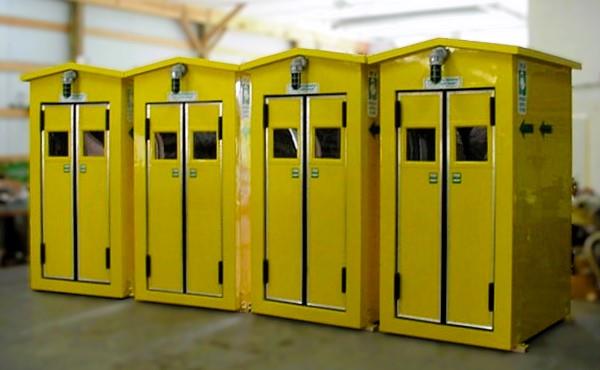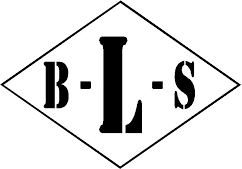Industrial Showers: Key Considerations for Safety and Efficiency

Few systems are as vital as industrial showers when it comes to protecting workers in hazardous environments. These specialized safety solutions are designed to deliver immediate and effective decontamination, helping to prevent severe injuries in the event of chemical spills, burns, or exposure to harmful substances. Unlike standard safety showers, industrial showers are engineered to withstand harsh industrial settings, providing reliable, durable performance in environments where safety is non-negotiable.
What Are Industrial Showers?
Industrial showers are specialized emergency systems designed for use in environments with high exposure risks to hazardous chemicals, extreme temperatures, or corrosive materials. They are a crucial component of workplace safety in industries such as chemical manufacturing, oil and gas, pharmaceuticals, mining, and laboratories.
These systems are engineered to provide a high flow rate of water, typically around 20 gallons per minute (GPM), to thoroughly drench a person who has been exposed to dangerous substances. Industrial showers are often used in conjunction with emergency eye and face wash stations, creating a comprehensive safety solution for fast decontamination.
Common Features of Industrial Showers
Industrial showers are built with robust components to handle the rigors of demanding industrial environments. Common features include:
- Heavy-Duty Construction: Industrial showers are often constructed with corrosion-resistant materials such as stainless steel or galvanized steel to withstand harsh chemicals and weather conditions.
- High Flow Rates: These units deliver a continuous, powerful flow of water that ensures rapid and thorough rinsing of contaminants from the body.
- Temperature Control Options: Many industrial showers can be equipped with tempered water systems or heating elements to prevent thermal shock, especially in cold climates.
- Activation Mechanisms: Industrial showers use easily accessible pull rods or push plates, enabling rapid activation in emergency situations.
- Drainage and Containment Systems: Some units include built-in drainage or collection systems to manage wastewater and prevent contamination of surrounding areas.
- Enclosures: For extreme conditions, industrial showers may be enclosed or insulated, offering protection against environmental factors such as wind, snow, or freezing temperatures.
These features are specifically tailored to the challenges faced in industrial settings, ensuring that the equipment remains operational and effective when it’s needed most.
Differences Between Industrial and Safety Showers
While industrial showers and standard safety showers share the same fundamental purpose—emergency decontamination—they are distinct in several key aspects:
When to Use an Industrial Shower Over a Safety Shower
Choosing between an industrial shower and a standard safety shower depends on the specific hazards present in your facility:
- Industrial Showers are ideal when:
- Your worksite handles highly corrosive, toxic, or reactive chemicals.
- The environment poses extreme temperature challenges, such as outdoor refineries or cold-storage facilities.
- You need to ensure compliance with stringent industry standards like ANSI Z358.1 or OSHA 1910.151(c).
- You require customized configurations, such as heated enclosures or combination units with eye/face wash stations.
- Safety Showers are sufficient when:
- The exposure risk is lower, such as in light manufacturing or academic labs.
- You don’t need the advanced features or heavy-duty construction of an industrial-grade unit.
Ultimately, industrial showers provide enhanced safety and resilience in environments where the stakes are highest.
How to Choose the Right Industrial Shower
Selecting the appropriate industrial shower for your facility requires a careful assessment of your specific hazards, environmental conditions, and regulatory requirements. Here’s a step-by-step guide to help you make the right choice:
1. Assess Your Workplace Hazards
Identify the chemicals, substances, or conditions that could cause harm. Are they corrosive? Toxic? Flammable? The severity and type of hazards will determine whether an industrial shower with enhanced features is necessary.
2. Consider Environmental Factors
Outdoor installations or facilities in extreme climates may require heated showers, insulated enclosures, or freeze-resistant components. Consider whether your industrial shower needs to function in freezing temperatures, high winds, or dusty environments.
3. Evaluate Flow Rates and Coverage
Ensure the shower meets or exceeds the flow rate recommendations of ANSI/ISEA Z358.1 (20 GPM for showers, 0.4 GPM for eye washes). Industrial showers typically offer higher flow rates to guarantee complete decontamination.
4. Review Activation and Accessibility
Industrial showers must be easy to activate—ideally operable within one second and accessible within 10 seconds of a hazard. Confirm that the placement of your showers meets OSHA and ANSI location requirements.
5. Verify Compliance with Industry Standards
Look for showers that comply with ANSI/ISEA Z358.1, OSHA regulations, and any other relevant industry guidelines. Compliance ensures that your equipment is up to standard and legally acceptable.
6. Partner with a Trusted Supplier
Work with a reputable provider like B-L-S Industries, Inc. to ensure you’re getting reliable, compliant equipment designed for the rigors of industrial use. Customization options, technical support, and long-term service are critical factors to consider.
Industry Regulations and Guidelines
Compliance with industry standards is not optional—it’s a legal and ethical responsibility. Key regulations to consider include:
- ANSI/ISEA Z358.1 – 2014 Standard: Specifies the performance and location requirements for emergency eye wash and shower equipment. It mandates flow rates, activation times, and maintenance practices.
- OSHA 29 CFR 1910.151(c): Requires facilities where employees may be exposed to injurious corrosive materials to provide suitable emergency showers and eye wash facilities.
- Local and International Standards: Depending on your location and industry, you may also need to comply with regional codes such as EN 15154 (Europe) or other global standards.
Regular inspections, testing, and maintenance are essential to ensure ongoing compliance and equipment readiness. B-L-S Industries, Inc. can help you understand these requirements and ensure your safety systems are properly implemented.
Partner with B-L-S Industries, Inc. for Your Industrial Shower Needs
At B-L-S Industries, Inc., we understand that in hazardous environments, every second counts. That’s why we’ve been dedicated to providing top-quality emergency drench showers, eye and face wash stations, and custom safety solutions since 1976. Located in Carl Junction, MO, we take pride in serving industries across the nation with products that meet the highest standards of safety and reliability.
Whether you need a standard eye wash station, a heated industrial shower enclosure, or a completely custom safety unit tailored to your facility, B-L-S Industries, Inc. has the expertise and product range to help you protect your workforce. Our mission is to ensure that your employees are safe and your operations remain compliant, no matter how challenging the environment.
Don’t wait for an emergency to expose the gaps in your safety systems. Contact us today to discuss your industrial shower and emergency equipment needs. Let us help you build a safer, more resilient workplace—because when it comes to safety, you deserve nothing less than the best.
